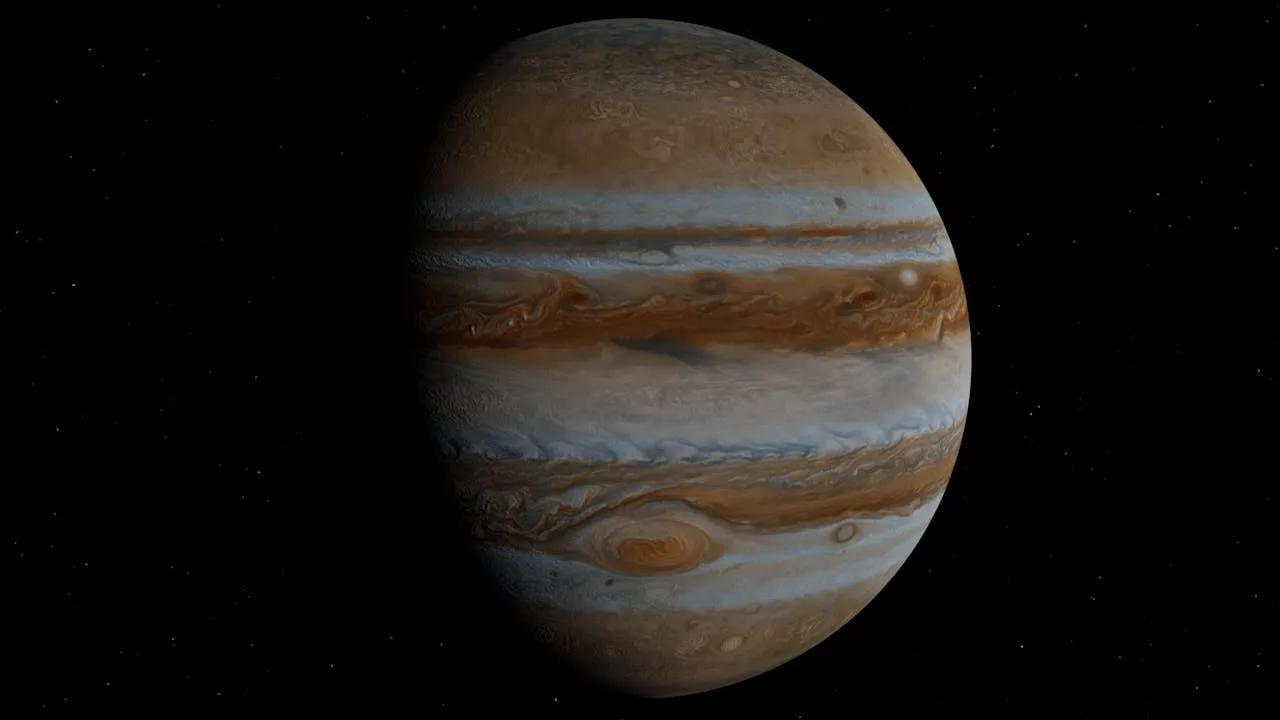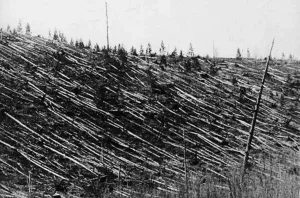Jupiter, the largest planet in our solar system, has always been a source of fascination for astronomers and scientists. With a mass over 300 times that of Earth and a diameter of nearly 143,000 kilometers (88,846 miles), Jupiter is a gas giant that dominates the celestial neighborhood. But how did this behemoth come to be? What factors contributed to its immense size and unique characteristics?
The story of Jupiter’s formation is not just about the planet itself—it’s also a tale of how our solar system came into existence. From the swirling disk of gas and dust that surrounded our young sun to the dynamic interactions among forming planets, Jupiter’s growth was influenced by a combination of physics, chemistry, and chance. In this article, we’ll dive into the scientific theories behind Jupiter’s formation, exploring its origins, its role in shaping the solar system, and the clues it provides about planetary systems beyond our own.
The Birth of the Solar System
The Solar Nebula: A Star is Born
The story of Jupiter begins about 4.6 billion years ago, with the formation of the solar system from a massive cloud of gas and dust known as the solar nebula. This cloud, composed primarily of hydrogen and helium, collapsed under its own gravity, forming a spinning disk around a nascent protostar—the young Sun. As the Sun grew at the center, the remaining material in the disk began to coalesce, forming the building blocks of planets.
Within this disk, regions of varying density and temperature set the stage for planetary formation. The inner part of the disk, closer to the Sun, was hotter, allowing only rocky materials to condense. The outer regions, where temperatures were lower, allowed for the condensation of volatile compounds such as water, methane, and ammonia, forming icy and gaseous materials. This temperature gradient played a crucial role in determining the types of planets that formed in different parts of the solar system.
Planetary Accretion: Building the Giants
Planetary formation began with tiny particles of dust and ice sticking together through electrostatic forces. Over time, these particles grew into larger clumps known as planetesimals, some of which reached sizes comparable to small moons. In the outer solar system, where Jupiter was forming, these planetesimals were rich in ices and gases, giving them a significant advantage in accumulating mass.
Jupiter likely began as a rocky or icy core, accumulating material from its surroundings. Once the core reached a critical mass, estimated to be around 10 Earth masses, its gravity became strong enough to rapidly attract and hold onto hydrogen and helium gas—the most abundant elements in the solar nebula. This runaway accretion of gas enabled Jupiter to grow into the massive planet we see today.
Why Jupiter Grew So Large
1. Location in the Solar Nebula
Jupiter’s position in the solar nebula played a pivotal role in its growth. Located approximately 5.2 astronomical units (AU) from the Sun, Jupiter formed in a region known as the “frost line” or “snow line.” This is the distance from the Sun where temperatures were low enough for volatile compounds like water, ammonia, and methane to condense into solid ice grains.
The frost line provided a wealth of solid material for Jupiter’s core to form, as icy planetesimals were much more abundant and massive than rocky ones closer to the Sun. Additionally, being farther from the Sun meant Jupiter was in a region with a higher density of gas, giving it more raw material to accumulate during its formation.
2. Gravitational Dominance
As Jupiter’s core grew, its increasing gravity allowed it to dominate its region of the solar nebula. The young planet acted as a “vacuum cleaner,” pulling in gas and planetesimals from its surroundings. This ability to clear its orbital neighborhood not only contributed to its growth but also prevented the formation of other large planets nearby, ensuring Jupiter remained the giant of the solar system.
Jupiter’s gravitational influence also had a stabilizing effect on the early solar system, shaping the orbits of smaller planetesimals and even influencing the formation of other planets. Its immense gravity continues to play a crucial role in the dynamics of the solar system today.
3. Timing of Formation
The timing of Jupiter’s formation was another critical factor in its size. Jupiter is believed to be the first planet to form in the solar system, giving it a significant head start in accumulating mass. By forming early, Jupiter had access to a larger share of the solar nebula’s gas and solids before the Sun’s radiation began dispersing the remaining material.
This early formation allowed Jupiter to reach its massive size while other planets, forming later or in less favorable locations, remained smaller. The rapid accretion of gas also ensured that Jupiter became a gas giant, as opposed to the rocky terrestrial planets like Earth and Mars.
Jupiter’s Composition and Structure
Jupiter’s immense size is matched by its unique composition and structure. Understanding what Jupiter is made of provides valuable insights into its formation and the conditions of the early solar system.
1. A Gas Giant Composition
Jupiter is primarily composed of hydrogen (about 90%) and helium (about 10%), with trace amounts of other elements like methane, ammonia, and water vapor. This composition closely mirrors that of the Sun, suggesting that Jupiter formed directly from the primordial solar nebula rather than from differentiated materials like the terrestrial planets.
The presence of heavier elements in Jupiter’s atmosphere, such as carbon and oxygen, indicates that the planet also accreted ices and rocky materials during its formation. These elements are key to understanding the planet’s early growth and the migration of materials within the solar nebula.
2. Internal Structure
Jupiter’s internal structure is thought to consist of several layers, including a dense core, a metallic hydrogen layer, and an outer layer of molecular hydrogen. The core, which may be rocky or icy, is estimated to be around 10–20 times the mass of Earth. Surrounding the core is a layer of metallic hydrogen, where the extreme pressure and temperature cause hydrogen atoms to behave like a liquid metal, conducting electricity and generating Jupiter’s powerful magnetic field.
The outer layer, composed of molecular hydrogen, transitions into the planet’s atmosphere. This structure, along with Jupiter’s rapid rotation (a day on Jupiter is just 10 hours), contributes to its oblate shape and dynamic weather patterns, including the famous Great Red Spot.
Jupiter’s Role in the Solar System
1. The Solar System’s Guardian
Jupiter’s massive size and gravitational influence have earned it the nickname “the solar system’s guardian.” The planet’s gravity acts as a shield, deflecting or capturing comets and asteroids that might otherwise pose a threat to Earth and the inner planets. For example, Jupiter’s gravitational pull is believed to have redirected the comet Shoemaker-Levy 9 into its atmosphere in 1994, preventing it from reaching the inner solar system.
At the same time, Jupiter’s gravity can also perturb the orbits of objects in the asteroid belt, sending them on collision courses with Earth. While this dual role as protector and potential hazard highlights Jupiter’s complexity, its overall impact has likely contributed to the stability of the solar system over billions of years.
2. Influence on Planetary Formation
Jupiter’s early formation and massive size had a profound effect on the development of other planets. Its gravity likely prevented the formation of a super-Earth in the region of the asteroid belt, instead leaving behind the smaller, rocky planets we see today. Additionally, Jupiter’s migration during the solar system’s early history may have influenced the orbits of Uranus and Neptune, as well as the distribution of smaller objects in the Kuiper Belt.
Studying Jupiter’s role in shaping the solar system helps scientists understand not only our own planetary neighborhood but also the dynamics of exoplanetary systems around other stars.
Clues About Exoplanetary Systems
Jupiter is not just a key to understanding our solar system—it also serves as a model for studying gas giants in other star systems. Thousands of exoplanets have been discovered, many of which are gas giants similar to or even larger than Jupiter. By comparing these distant worlds to Jupiter, scientists can learn about the diversity of planetary systems and the factors that influence their formation.
For example, “hot Jupiters,” gas giants that orbit very close to their stars, challenge traditional models of planetary formation. Studying Jupiter’s migration and growth provides a framework for understanding how these exoplanets ended up in their current orbits.
How Close Are We to Fully Understanding Jupiter?
Despite centuries of study, there is still much to learn about Jupiter. Modern missions like NASA’s Juno spacecraft are providing unprecedented data on the planet’s atmosphere, magnetic field, and internal structure. Juno’s findings are helping scientists refine models of Jupiter’s formation and its role in the solar system.
Future missions, such as the European Space Agency’s JUICE (Jupiter Icy Moons Explorer), will focus on Jupiter’s moons, which may hold clues about the planet’s history and the potential for life in its subsurface oceans. Together, these efforts are bringing us closer to unraveling the mysteries of the solar system’s largest planet.
Conclusion
Jupiter’s immense size and influence are the result of a complex interplay of factors, including its location in the solar nebula, its early formation, and its gravitational dominance. As the first planet to form, Jupiter set the stage for the development of the solar system, shaping the orbits of other planets and protecting Earth from cosmic threats.
Understanding how Jupiter became so big is not just a journey into the past—it’s a key to understanding the processes that shape planetary systems throughout the universe. As we continue to explore Jupiter and its moons, we uncover new insights into the origins of our own solar system and the possibilities of life beyond Earth.




